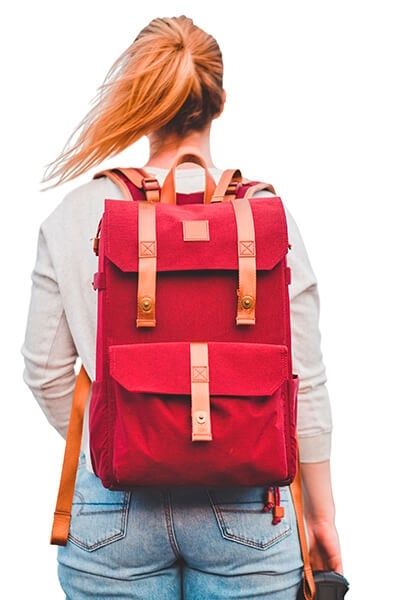Backpack safety: We've got your kid's back to avoid mishaps
Posted on: 9/20/2022
How to easily fix bad habits and ace backpack injuries prevention
If you're old enough to remember book bags, you know they've long been replaced by backpacks.
From the littles to the not-so, each category of kid wears their backpack like another piece of clothing. Color, creativity and the right amount of cool factor all go into making the choice, whether for school, sports or sleepovers.
But that choice can also create risks to kids' health and safety, if not done with some thought.
Things to keep in mind:
- The width of the pack should be about the same as the wearer.
- Length should be no longer than the torso (central part of the body) and not hang more than four inches below the waist.
- The weight of what gets loaded into backpacks increases as books, sports equipment and the number and types of electronic devices increase.
If you've seen your child twist and contort as they hoist or sling a backpack over their shoulder racing out the door, the following shouldn't surprise you.
Each year, an estimated 14,000 children need treatment for backpack-related injuries... while from 2019-2020 an estimated 1,200 kids ended up in the ER for the same.
– cpsc.gov
Here's where that statistic gets interesting and why backpack safety is so important.
There’s growing awareness on this topic over the last few years that’s making a positive impact. The result is that numbers for backpack ER visits have gone down.
A lot.
From the same source noted above, in 2013 the annual average for kids under 19 being seen in the ER was 5,000.
Going from 5,000 to 1,200 is a big deal (cue happy dance music!).
So, let’s keep it going.
Here's a basic three-step guide to follow for any age backpack wearer. Watch our video for a quick summary to see it in action. Then see the steps below for more information.
Play the accessible version of the “Backpack safety tips” video
1. LOAD
Since the objective is to keep the backpack light, choose one that has sturdy compartments but is lightweight.
As you load, distribute by weight, the right way. Put heavy items on the bottom and in the rear compartment (the side that will be against the back) and lighter items in the front compartment. This helps keep weight off the shoulders.
2. LIFT
Like unloading luggage after a road trip, proper lifting is key to backpack safety.
Bend at the knees before lifting -- both knees. Then grab the pack with both hands before lifting it to the shoulders.
3. ADJUST
Once lifted, both straps should be worn. No single-shoulder slinging!
Using just one strap causes a lean to the side and may cause the spine to curve.
Check the bag as your child grows, especially for those in growth spurts.
Whatever your child's age or size, teach them how to wear a backpack correctly and to know their carry limit.
A loaded backpack should not be more than 10-15% of their body weight. For example, if a child weighs 50 pounds, the backpack should not weigh more than 7.5 pounds.
These tips can help fix bad habits and prevent backpack injuries. But if your child has shoulder soreness, pain or tingling in arms, hands or fingers, we can help. Physical therapy can help strengthen muscles used for lifting and carrying and relieve symptoms.
Click the blue "Request an appointment" button. Most states do not require a doctor's prescription for physical therapy.

